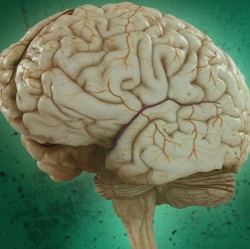
Neurologists believe they have identified a hypersensitive nerve system that triggers the pain and are in the final stages of testing medicines that soothe its overly active cells. These are the first ever drugs specifically designed to prevent the crippling headaches before they start, and they could be approved next year.
If they deliver on the promise they have shown in studies conducted so far, which have involved around 1,300 patients, millions of headaches may never happen. “It completely changes the paradigm of how we treat migraine,” says David Dodick, a neurologist at the Mayo Clinic’s campus in Arizona and president of the International Headache Society. Whereas there are migraine-specific drugs that do a good job stopping attacks after they start, the holy grail for both patients and doctors has been prevention.
The first migraine-specific drugs, the triptans, were introduced in the 1990s. Richard Lipton, director of the Montefiore Headache Center in New York City, says triptans were developed in response to the older idea that the dilation of blood vessels is the primary cause of migraine; triptans were supposed to inhibit it.
Ironically, subsequent drug studies show that they actually disrupt the transmission of pain signals in the brain and that constricting blood vessels is not essential. “But they work anyway,” Lipton says. A survey of 133 detailed triptan studies found that they relieved headache within two hours in 42 to 76 percent of patients. People take them to stop attacks after they start, and they have become a reliable frontline treatment for millions.
What triptans cannot do, and what Peter Goadsby, director of the Headache Center at the University of California, San Francisco, has dreamed about doing for more than 30 years, is prevent migraine attacks from happening in the first place. In the 1980s, in pursuit of this goal, Goadsby focused on the trigeminal nerve system, long known to be the brain’s primary pain pathway.
It was there, he suspected, that migraine did its dirty work. Studies in animals indicated that in branches of the nerve that exit from the back of the brain and wrap around various parts of the face and head, overactive cells would respond to typically benign lights, sounds and smells by releasing chemicals that transmit pain signals and cause migraine. The heightened sensitivity of these cells may be inherited; 80 percent of migraine sufferers have a family history of the disorder.
Goadsby co-authored his first paper on the subject in 1988, and other researchers, including Dodick, joined the effort. Their goal was to find a way to block the pain signals. One of the chemicals found in high levels in the blood of people experiencing migraine is calcitonin gene-related peptide (CGRP), a neurotransmitter that is released from one nerve cell and activates the next one in a nerve tract during an attack. Zeroing in on CGRP and interfering with it was hard. It was difficult to find a molecule that worked on that neurotransmitter and left other essential chemicals alone.
As biotech engineers’ ability to control and design proteins improved, several pharmaceutical companies developed migraine-fighting monoclonal antibodies. These designer proteins bind tightly to CGRP molecules or their receptors on trigeminal nerve cells, preventing cell activation. The new drugs are “like precision-guided missiles,” Dodick says. “They go straight to their targets.”
It is that specificity, and the fact that scientists actually know how the drugs work, that has Dodick, Goadsby and others excited. In two placebo-controlled trials with a total of 380 people who had severe migraines up to 14 days per month, a single dose of a CGRP drug decreased headache days by more than 60 percent (63 percent in one study and 66 percent in the other).
In addition, in the first study, 16 percent of the patients remained totally migraine-free 12 weeks into the 24-week trial. Larger clinical trials to confirm those findings are currently under way. So far the CGRP drugs work better at prevention than any of the borrowed heart or epilepsy drugs and have far fewer side effects. They are given to patients in a single monthly injection.
Migraine specialists are also exploring other treatments, including forehead and eyelid surgery to decompress branches of the trigeminal nerve, as well as transcranial magnetic stimulation (TMS), a noninvasive way of altering nerve cell activity.
Lipton says he has had some good results with TMS. He has also referred patients for surgical interventions but says the experience “has been disappointing,” and he is not recommending it. For his part, Goadsby views surgeries and high-tech efforts as a kind of desperation: “They strike me as a cry for help. If we better understood migraine, we’d know better what to do.”
